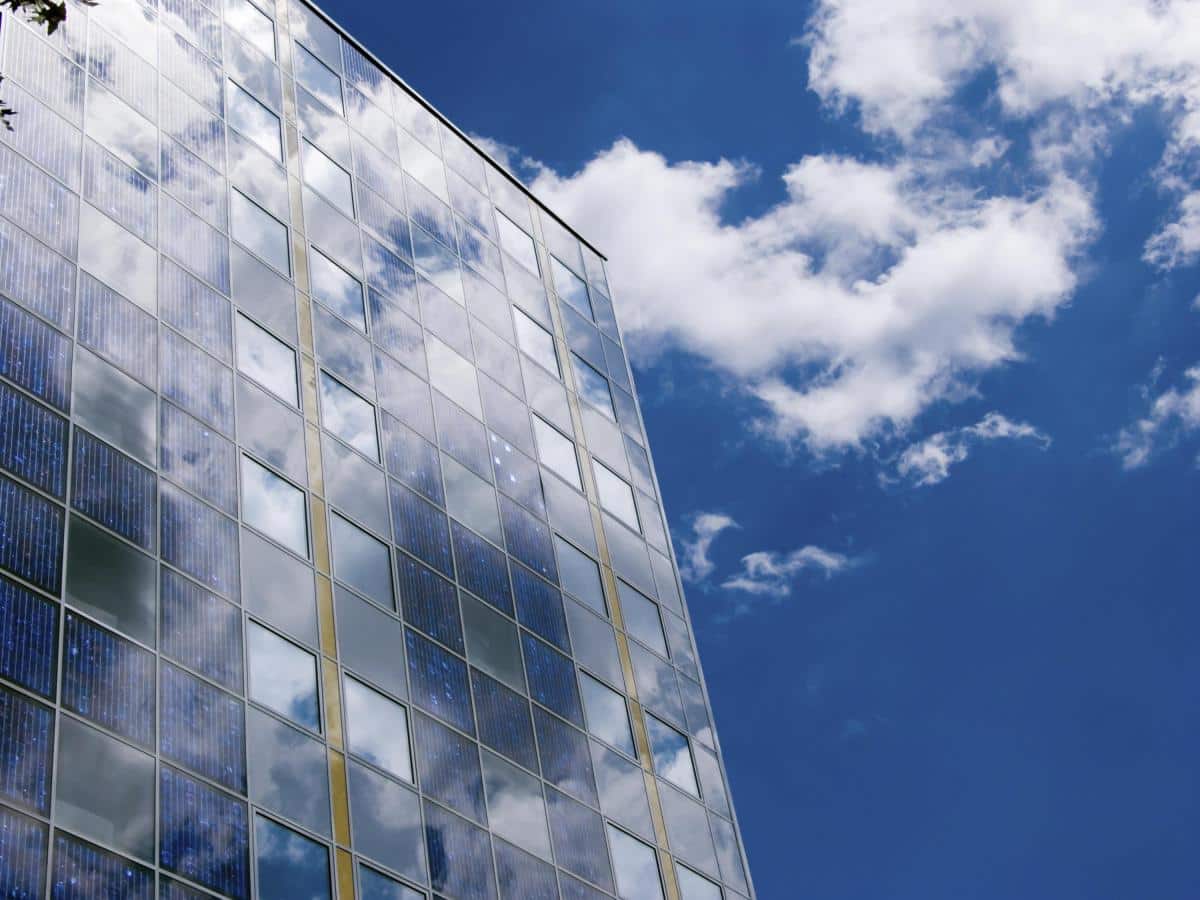DAPPER: EnergyVille and UGhent make building-integrated photovoltaics more predictable, reliable and traceable in the DAPPER project
KU Leuven, imec and UHasselt, all partners within EnergyVille, are engaging in the DAPPER project, together with UGhent. With the support of Flux50, this project investigates building integrated solar systems, in order to predict, monitor and improve performance in the long run.
The regulations concerning energetic performance of buildings are becoming ever stricter, eventually targeting net zero energy consumption. Electricity production by solar panels (PV systems) is one of the few techniques that enable reaching this goal. Regular solar panels on roofs have become a well-known and widely established technology. PV systems integrated in façades or roofs (the so called Building Integrated Photovoltaics, BIPV) can provide an elegant solution and unlock additional space to generate energy. This application creates some specific requirements regarding implementation, interaction with the building and operation. While this project targets BIPV as the most challenging case, several results will also be valuable to other PV applications.

Goals
The DAPPER project is built around 4 core goals:
- We want to develop models for an improved energy prediction for the system over its entire lifetime.
- From reliability assessment, we will derive design rules, serving as a guide for choosing components, targeting optimal performance and reliability.
- We create tools for continuous monitoring, that will enable the system to perform self-tests and enable predictive maintenance.
- We develop simulation tools for an energy management system, that allow forecasting and predictive maintenance.
From modelling frameworks to data monitoring
The research will build on existing simulation models, predicting the energy yield of PV systems and the thermal properties of buildings. We will combine and expand these approaches to include:
- the mutual interactions of buildings and PV,
- the power conversion stage, and
- lifetime effects like degradation and failure probabilities.
This work will be complemented with reliability investigations that generate understanding about physical mechanisms, and enable the prediction of degradation and failure rates. Where possible, we seek to prevent such effects. This shall lead to design rules and component selections that improve the reliability of BIPV systems, targeting lifetimes of greater than 35 years. For the necessary experiments, prototypes will be built. They will be tested in the laboratories and outdoor facilities of EnergyVille, UHasselt and KU Leuven.
The development of data analysis will start with records available from EnergyVille or provided by partners. Machine-learning techniques will be used to identify trends and deviations. We will investigate both model-based and data-driven approaches in order to identify the optimal approach for automated performance monitoring. During the course of the project, we will provide data from own test installations, and results of the analysis will be fed back to improve the models developed earlier.

Bringing knowledge together
This project brings together KU Leuven, imec, UHasselt and UGhent, four well-established research institutions in their respective domains. KU Leuven, imec and UHasselt are all partners in EnergyVille. Each will contribute with their specific expertise, which results in a broad field of expertise concerning performance modeling, PV and building components design, power electronics, reliability and performance testing and data analysis.
The consortium is backed by a strong 16-party advisory committee including partners from the sectors of construction, engineering, and operation and maintenance.
Results in a nutshell
For the first time, we will establish a model of a BIPV system that encompasses the entire system from sunlight to grid connection, interactions with the building, and lifetime effects. Different resulting models will serve a better planning of buildings with such systems, and can be used as a “digital twin” in performance monitoring and forecasting, respectively. We will identify operating conditions specific to BIPV and derive design rules and recommendations for the choice of materials. We will further develop both model-backed and data-driven performance monitoring solutions and validate them with results from existing systems. The results will help to de-risk the planning of BIPV systems, put the design on more secure footing, and reduce operational losses by proper monitoring and predictive maintenance. Eventually our performance models can be used for energy yield prediction and thus the optimization of the overall building performance. Some results can be adapted by partners immediately, while others will have to be worked out further or have to be validated on a larger scale, e.g. in the framework of a Living Lab.
This project receives funding from VLAIO under HBC.2020.2144 and is supported by Flux50.

